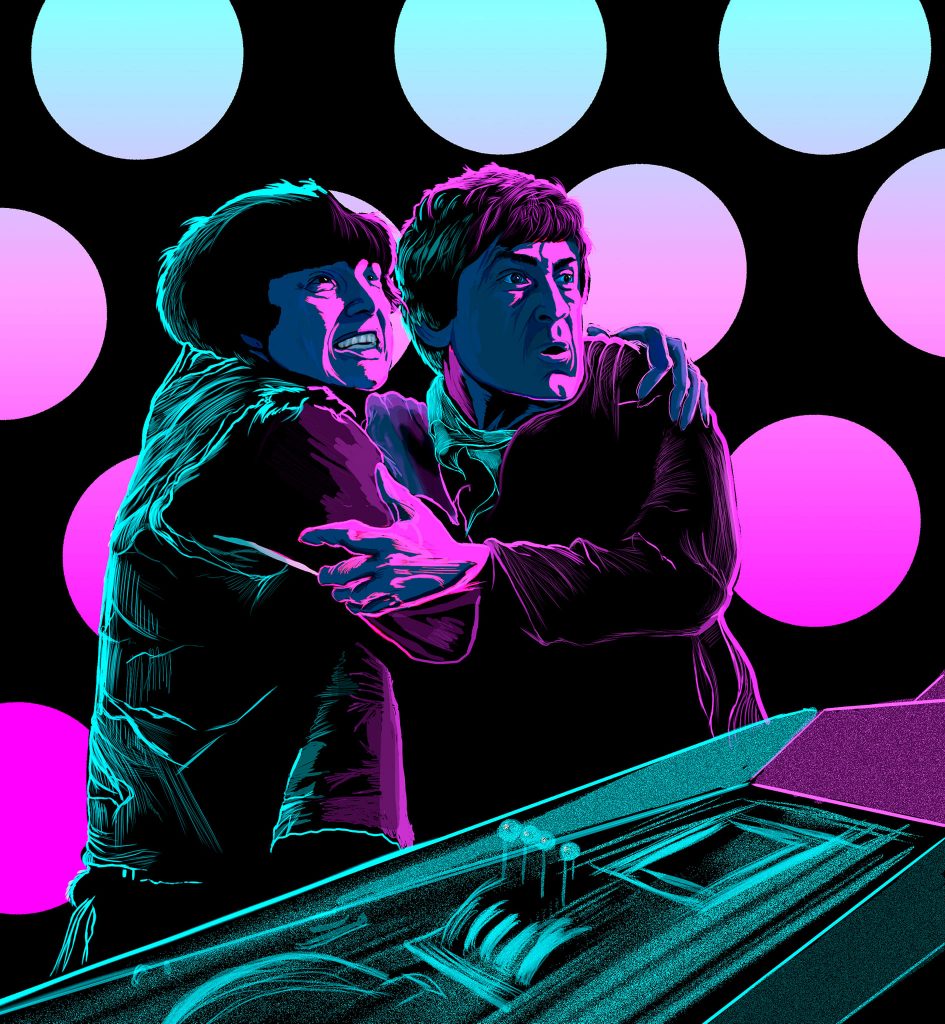The minutiae of the production history of Doctor Who is an often absolutely fascinating one and, down the years, thanks to the efforts of numerous archivists, the BBC and magazines like Doctor Who Magazine, which I used to edit, much of it has been charted. But mysteries remain: and one of them, it turns out, is just what stock images was utilised in some memorable episodes, including the Patrick Troughton story, The Mind Robber.
(Oh, and yes, I’m sure Doctor Who minutiae isn’t fascinating for everybody, but bear with me on this one, just for this article!)
For those unfamiliar, in the first episode of The Mind Robber, first broadcast on Saturday 14th September 1968, the Doctor is forced to activate an emergency unit on board the TARDIS to escape destruction by a volcanic eruption, after events in The Dominators. A device that, in his words, takes them “nowhere”, moving his machine out of normal space and time to a deadly world where fantasy rules.
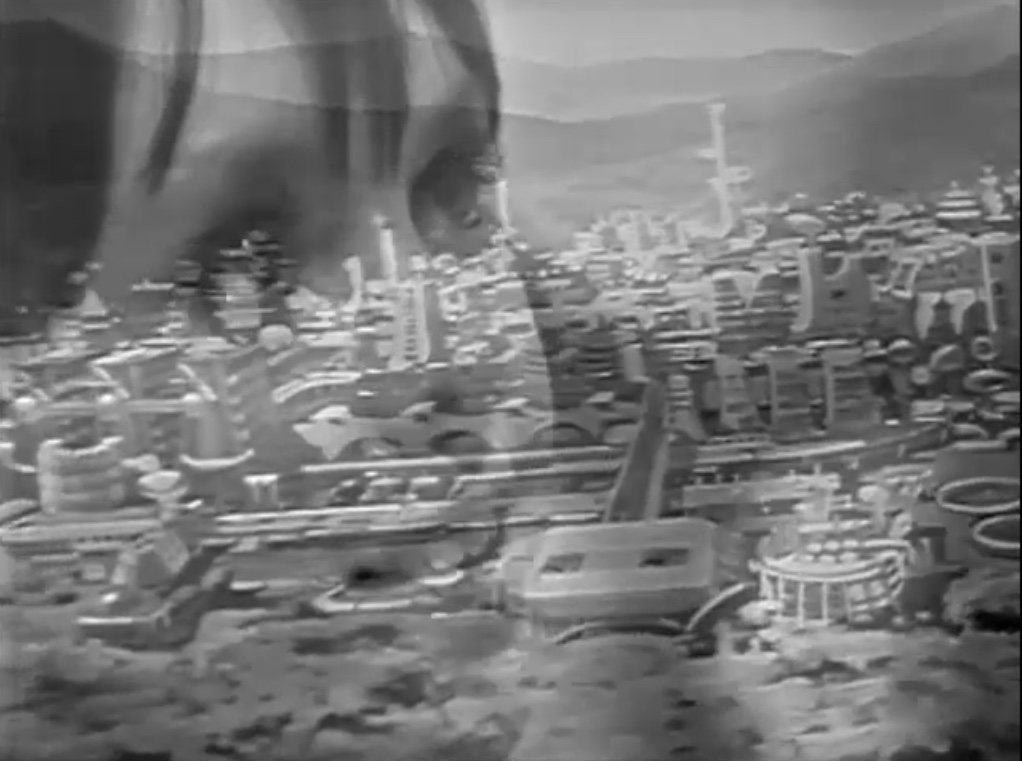
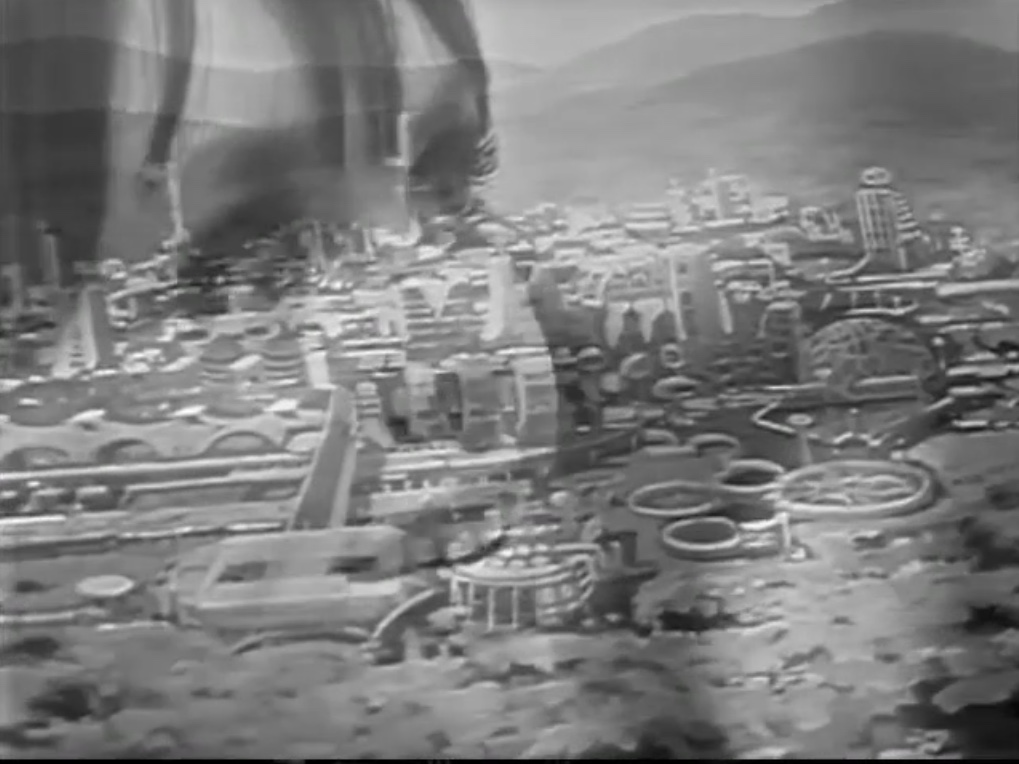
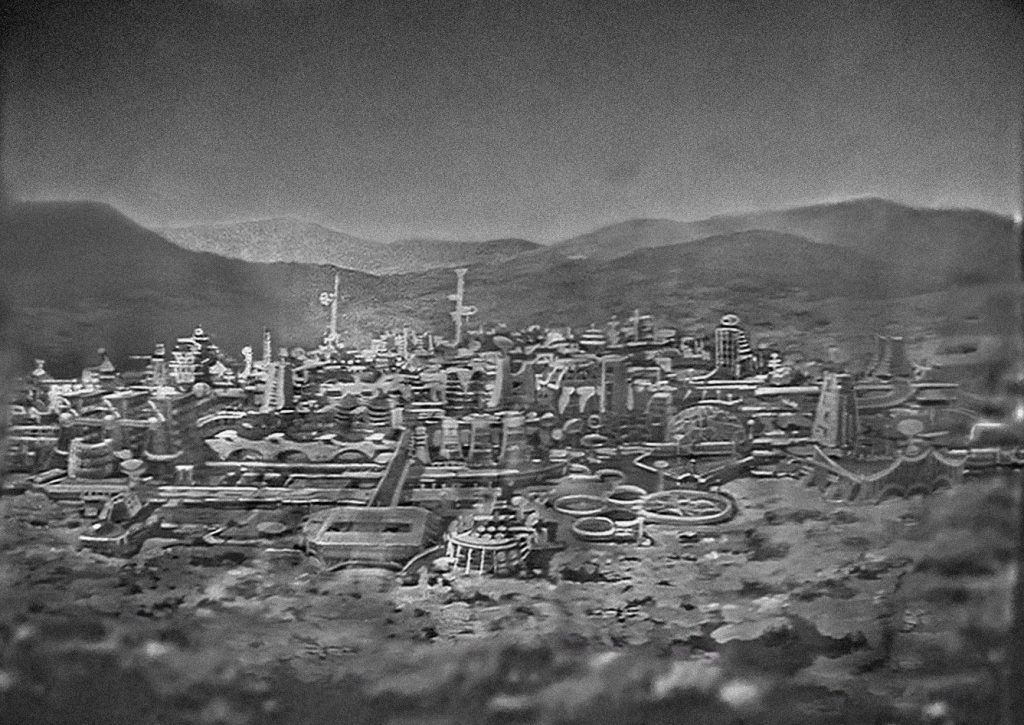
The travellers find themselves lured out of the ship into a ghostly white void, Jamie McCrimmon (Frazer Hines) by scenes of his beloved Scottish Highlands, Zoe (Wendy Padbury) by a fleeting glimpse of her home city. As the story progresses, the TARDIS crew find they are trapped in the Land of Fiction, where characters from stories and legends come to life and The Master, the mysterious ruler of The Land of Fiction, chooses the Doctor to take his place.
The Mind Robber was planned as a four-part serial, but was increased to five after the previous adventure, The Dominators, was reduced from six to five episodes. As a result, the first four episodes were only between 19 and 22 minutes in length and episode five was the shortest “classic” Doctor Who episode ever, at just over 18 minutes. In order to extend the story, the first episode was written, uncredited, by series producer Derrick Sherwin, much to the dismay of the story’s writer, Peter Ling.
But, given budgets on the series at the time, was that view of the city on the TARDIS scanner specifically created for the story – or for something else entirely?
This is the question first asked by 3D artist Gav Rymill on Twitter back in 2018, who’s also a writer and researcher for the Doctor Who Blu Rays, and Doctor Who Magazine, a query I came across by chance after seeing a smashing psychedelic take on the Second Doctor and Jamie by artist Cole Thompson… and it sent me down a vortex of a rabbit hole, taking various other folk with me along the way. My thanks to them all for the discussion!
Gav was pondering whether or not to take the brief appearance of Zoe’s home city in the first episode of The Mind Robber, and work up a full 3D model – but was loathe to do it, if a picture of the original existed.
Evan Hercules was the designer on The Mind Robber, but the visual effects were by Bernard Wilkie and Jack Kine and, given its brief appearance, and the breakneck speed at which this episode was put together, it came as no surprise to learn the image was a painting, not a model. But who created it?
And this is where began to I take the combined might of Doctor Who minutiae genii down a rabbit hole with me…
The general feeling, firstly, was that this artwork was something off the shelf, rather than being prepared especially for the serial – and thoughts first turned to Out of the Unknown, particularly since the Mind Robber “White Robots” first featured in the episode “The Prophet“, aired in January 1967, a story adapted from Isaac Asimov’s tale, “Reason”.
But before that better known appearance, the robots also featured in an episode of BBC2’s Thirty Minute Theatre, “The Metal Martyr“, first aired in December 1967, and repeated on BBC2 on 28th August 1968, now lost, written by Derrick Sherwin.
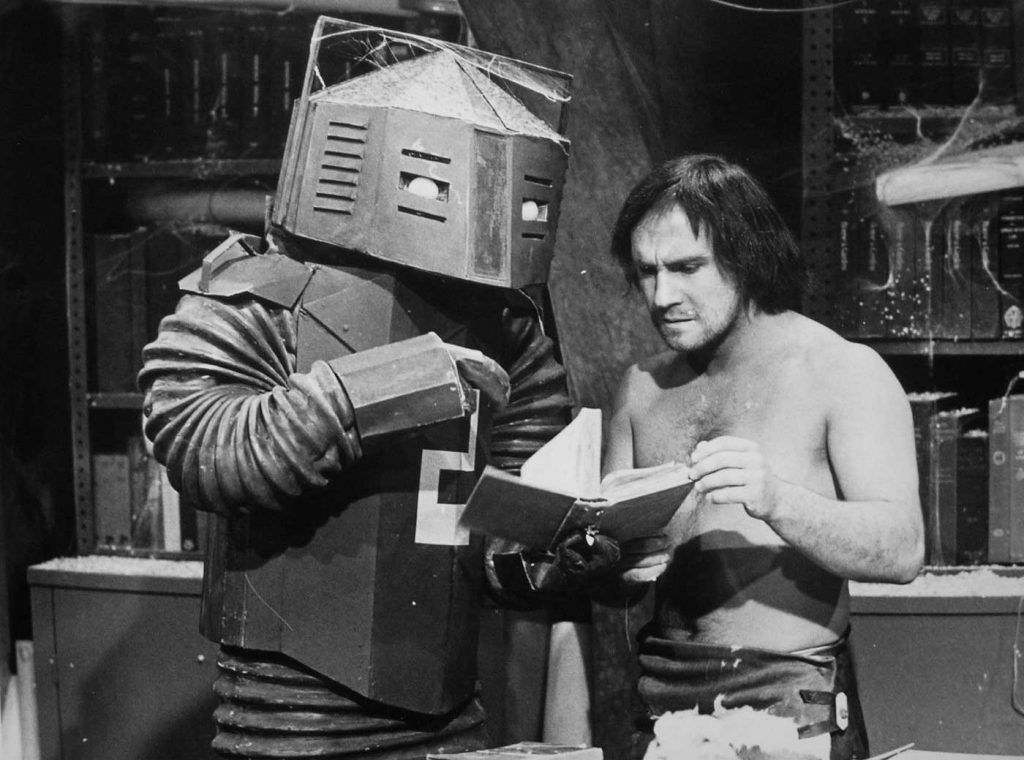
“The Metal Martyr” was written by Robert Moore Williams, and designed by Raymond Cusick, creator of the look of the Daleks, but no the story itself, like many others, does not survive. However, an audio clip makes mention of a curious robot coming from a city – so was a shot of it included? And, if so, like the Dalek city in The Daleks and other visuals for early Who, was this fleeting glimpse of Zoe’s home his work, borrowed from an story Sherwin was very familiar with?
Sadly, much of Cusick’s archive was lost when he passed – an entire plan chest of artwork – so this remains, for now, just a tantalising possibility.
Tantalisingly, there are other possible sources for the image. Gav Rymill notes that Derrick Sherwin suggest an image of the city of Brasilia be used to illustrate Zoe’s city, imagery from that huge conurbation was in fact, used in a later Doctor Who story, Frontier in Space.
New Zealand Doctor Who archivist Jon Preddle then pitched in, with details of image use in The Mind Robber Episode One, which refer to the use of photographs from G.M. Studios, and stock film from the BBC.
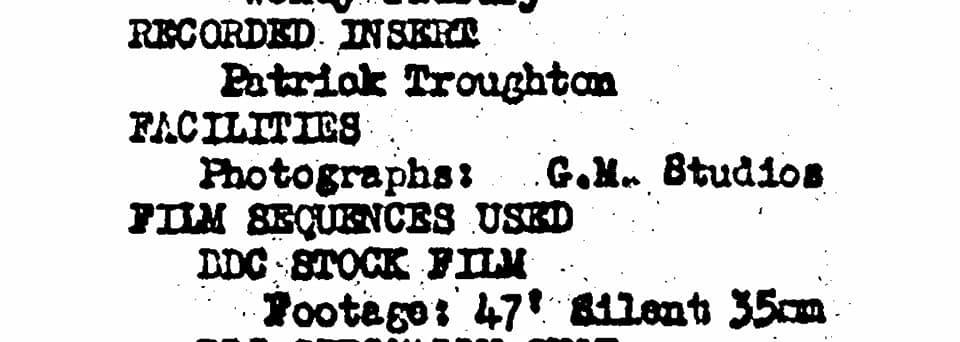
Richard Bignell helped further, reporting that Martin Wiggins, who compiled The Mind Robber DVD notes, indicated that the script suggested Brasilia as the “ultra-modern city”, but not that the final image was Brasilia. The notes also state that both images (Zoe’s and Jamie’s) were supplied by GM Studios.
Gary Russell stated Gaumont Studios, who probably still had their reference library still at Lime Grove Studios, where some of the studio work was filmed, were also known as GM Studios
A long shot also considered was that GM Studios is the name of a department run by General Motors, who created huge cityscapes for various World Fairs, titled “Futurama” (nothing to do with the animated series) – and again, there are echoes in the design, but we can now rule out any connection, thanks to the DVD notes.
While we haven’t, as yet come up with a definite answer to Gav Rymil’s question, first posed in 2018, we’ve certainly given it a try, thanks to polling of minds that I wish I’d sometimes had access to back when I was editing Doctor Who Magazine. I bothered Andrew Pixley, dedicated writer of the magazine’s Archives pages, calling him on the phone with enough daft questions, poor man, because there was no other way to communicate, back then!
• Doctor Who: The Mind Robber is currently airing on BritBox
With thanks to Gav Rymill who started this, Simon Hodges for photo research, David Brunt for finding the photo from The Metal Martyr, David J Howe, Jon Preddle, Gary Russell, Toby Hadoke, John Kelly, Steve Flanagan, Andrew Pixley, Richard Bignell, the Ham Fisted Bap Vendor and many others – a team effort!
The Mind Robber – Connections
• Doctor Who – The Mind Robber – DVD (AmazonUK Affiliate Link)
• IMDB – The Mind Robber Guide
• TARDIS Wiki: The Mind Robber – Novelisation Notes

The novelisation of the story, first published in 1986, was one of the last and longest of the later Target Doctor Who books. Instead of picking up right where The Dominators ends, Ling has the Doctor, Jamie and Zoe visit Pompeii. There, the volcanic eruption places the TARDIS in jeopardy and forces the Doctor to remove it from time and space to escape the lava flow.
The novelisation also contains many specially written scenes, including a firing squad test before the charging unicorn and several references to Lewis Carroll’s Alice in Wonderland, among many others
• Doctor Who – The Mind Robber – BBC Audiobook
To escape a catastrophic volcanic eruption the Doctor takes the TARDIS out of space and time – and into a void he can only describe as ‘nowhere’. But the crisis is far from over and when the time-machine’s circuits overload, the TARDIS explodes.
The Doctor, Jamie and Zoe come to in a dark unearthly forest. There they encounter a host of characters who seem somehow familiar: a beautiful princess with long flaxen hair, a sea traveller dressed in eighteenth-century clothes, and a white rabbit frantically consulting his pocket watch…
What is happening to the three time-travellers? What strange power guides their actions? In the Land of Fiction who can really tell?
Derek Jacobi, who played The Master in the Doctor Who episode ‘Utopia’, reads Peter Ling’s complete and unabridged novelisation, first published by Target Books in 1986.
• Hero Collector: White Robots
Further Reading…
• Buy Out of the Unknown – a guide by Mark Ward (AmazonUK Affiliate Link)
• The Mind Robber, by Andrew Hickey (and Peter Ling)
“Working through the Black Archive monographs on Doctor Who, I’ve now reached the seventh, on the 1968 story The Mind Robber, which features the Doctor, Zoe and Jamie transported to a Land of Fiction, and includes one episode where Fraser Hines is briefly replaced by another actor as Jamie because he had caught chickenpox.”
• Derrick Sherwin – Who’s Next
In a long and varied career, Derrick Sherwin (16th April 1936 – 17th October 2018) was an actor, writer, script editor, TV producer… and also a house builder and renovator, bar owner, restaurateur and bungee-jump proprietor!
In 1968 he joined the production team of Doctor Who as assistant story editor during the Patrick Troughton era, and went on to become the programme’s script editor and, eventually, its producer. During this time Sherwin commissioned Robert Holmes’ first script for the series; oversaw the transition from black-and-white to colour and the introduction of the Third Doctor, Jon Pertwee; was instrumental in conceiving the Earth-bound aspect of Pertwee’s era; and is credited with creating two of Doctor Who’s most enduring ingredients: the intelligence taskforce UNIT, and the Doctor’s own race – the Time Lords.
In a candid and unflinching memoir, Sherwin discusses the pressures of writing and producing a cult science-fiction TV show for a family audience, his subsequent experience as an independent producer and creator of TV formats, and his ‘new life’ in one of the world’s most exotic countries: Thailand.
Nicholas Whyte cautions in his review that “Less than 30 pages of over 200 are about Doctor Who, which is not terribly surprising as it was just two years in the life of an author now in his late seventies. Sherwin is frank but also very sympathetic about the difficulties of Patrick Troughton’s difficult relations with the BBC and the show, and frank but less sympathetic about some of his other colleagues.”
Out of the Unknown
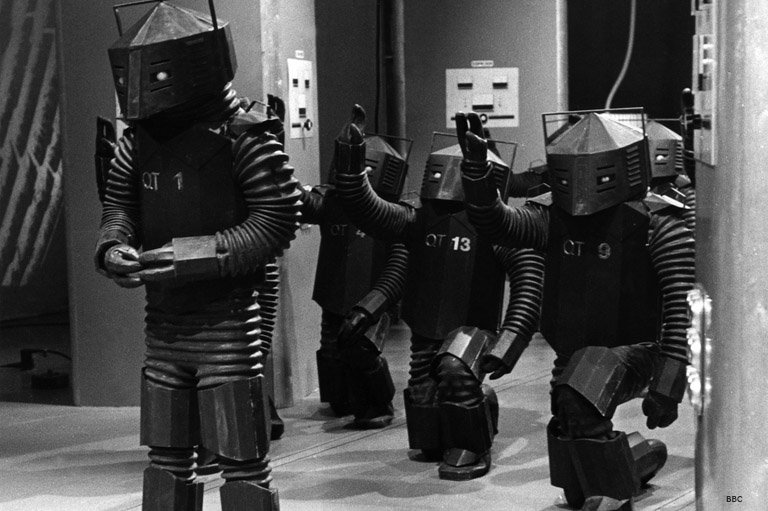
• Out of the Unknown – Lost Episodes
• Out of the Unknown – Missing Clips Guide by Lee Rose
• Discussion of lost Out of the Unknown Telesnaps
• Internet Archive: Out of the Unknown Picture Galleries One | Two | Three
Thirty Minute Theatre
• The Metal Martyr – Radio Times entry on the BBC Genome
• The Metal Martyr – BFI Listing
• Thirty Minute Theatre – Missing Episodes List
The founder of downthetubes, which he established in 1998. John works as a comics and magazine editor, writer, and on promotional work for the Lakes International Comic Art Festival. He is currently editor of Star Trek Explorer, published by Titan – his third tour of duty on the title originally titled Star Trek Magazine.
Working in British comics publishing since the 1980s, his credits include editor of titles such as Doctor Who Magazine, Babylon 5 Magazine, and more. He also edited the comics anthology STRIP Magazine and edited several audio comics for ROK Comics. He has also edited several comic collections, including volumes of “Charley’s War” and “Dan Dare”.
He’s the writer of “Pilgrim: Secrets and Lies” for B7 Comics; “Crucible”, a creator-owned project with 2000AD artist Smuzz; and “Death Duty” and “Skow Dogs” with Dave Hailwood.
Categories: Books, Doctor Who, downthetubes News, Magazines, Other Worlds, Television
